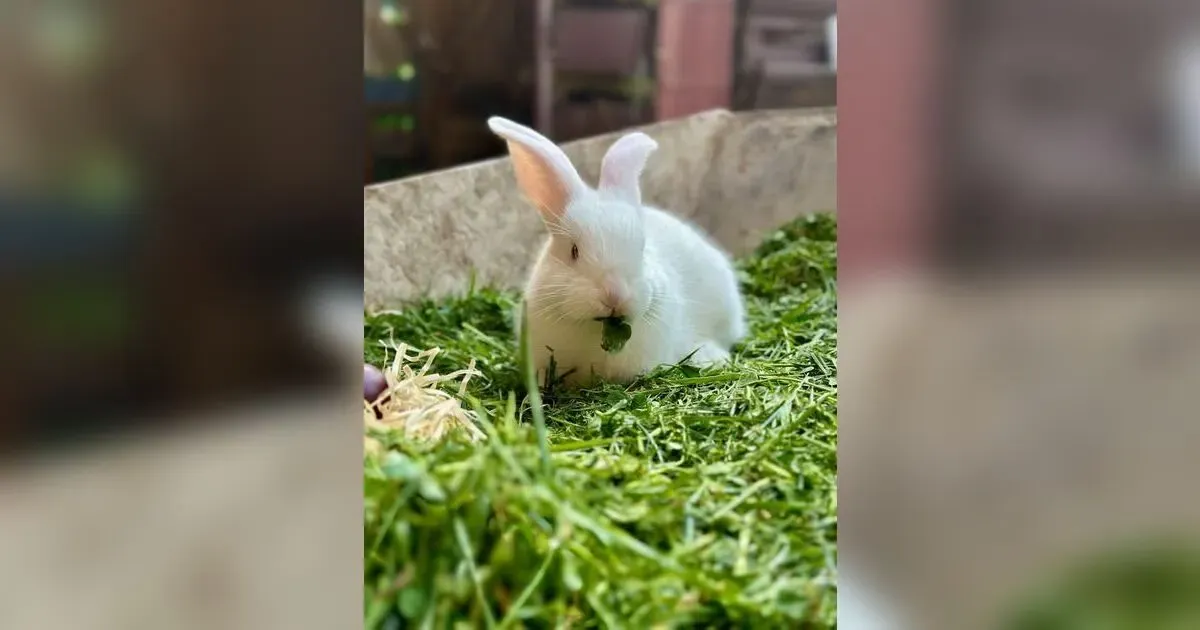Before you start marketing, it’s crucial to identify your target audience you are focusing on. By effectively combining the marketing strategies, you can successfully promote your rabbit business and reach your target audience.
Understanding the Market
It’s crucial to identify your target audience. Are you focusing on:
• Pet owners: Families looking for a companion or children’s pet.
• Breeders: Other rabbit enthusiasts interested in acquiring specific breeds.
• Meat producers: Farmers or individuals seeking a sustainable protein source.
• Educational institutions: Schools or zoos in need of rabbits for demonstrations or exhibits.
Building Your Brand
• Choose a memorable name: A catchy name can make your business stand out.
• Develop a unique logo: A visually appealing logo can help you create a strong brand identity.
• Create a consistent message: Ensure your branding is consistent across all marketing channels.
Marketing Channels
a. Social Media:
Create engaging content, such as photos, videos, and educational posts.
Use relevant hashtags to reach a wider audience.
Consider platforms like Instagram, Facebook, and TikTok.
b. Website:
Build a professional website with information about your rabbits, services, and contact details.
Optimize your website for search engines (SEO) to improve visibility.
c. Local Advertising:
Place ads in local newspapers or community magazines.
Consider advertising on local radio or television stations.
Participate in local events or fairs.
d. Networking:
Join rabbit-related organizations or clubs.
Attend industry conferences or trade shows.
Network with local veterinarians, pet stores, and animal shelters.
e. Content Marketing:
Create informative blog posts, articles, or videos about rabbits.
Share your content on social media and other relevant platforms.
Special Offers and Promotions
• Discounts: Offer discounts on multiple rabbits or specific breeds.
• Loyalty programs: Reward repeat customers with discounts or special offers.
• Seasonal promotions: Create promotions for holidays or special occasions.
Customer Service
• Provide excellent customer service: Respond promptly to inquiries and address any concerns.
• Offer after-sale support: Provide guidance on caring for rabbits and address any issues that may arise.
Examples of Marketing Campaigns
• Educational Series: Create a series of blog posts or videos on rabbit care, health, and behavior.
• Contests and Giveaways: Host contests or giveaways to generate excitement and engagement.
• Partnerships: Collaborate with local pet stores or veterinarians to cross-promote your business.
• Testimonials: Collect and share testimonials from satisfied customers.
Before starting a rabbit business, it’s crucial to conduct a thorough market analysis. This involves assessing factors such as:
1. Demand analysis for a Rabbit Business
To conduct a successful demand analysis for your rabbit business, it’s essential to identify and understand your target market. Consider the following factors:
Consumer Demographics
• Age: Are you targeting young families, individuals, or older consumers?
• Income Level: What is the average income level of your target market?
• Location: Are you focusing on urban, suburban, or rural areas?
• Lifestyle: What are the lifestyle preferences and values of your target market?
Consumer Preferences
• Rabbit Meat: Is there a demand for rabbit meat ? If so, what are the preferred cuts or cooking methods?
• Pet Rabbits: Are pet rabbits popular?
• Other Products: Are there other rabbit-related products (e.g., fur)
Market Trends
• Health Consciousness: Is there a growing trend towards healthy, locally sourced foods?
• Pet Ownership: Are pet ownership rates increasing or decreasing ?
Research Methods
To gather data on consumer demand, you can use various methods, including:
• Surveys: Conduct surveys to collect information directly from potential customers.
• Focus Groups: Organize focus groups to get feedback on consumer preferences and needs.
• Market Research Reports: Analyze existing market research reports on the rabbit farming industry.
• Social Media: Monitor social media platforms to identify trends and consumer discussions.
By conducting a thorough demand analysis, you can gain valuable insights into your target market and tailor your business strategy accordingly.
2. Competitive Analysis for a Rabbit Business
A competitive analysis is essential for understanding the landscape of your rabbit business. It helps you identify your competitors’ strengths, weaknesses, and market positioning. Here are some key factors to consider:
Direct Competitors
• Local Rabbit Farms: Identify other rabbit farms that offer similar products or services.
• Pet Stores: Assess the availability of rabbits and rabbit-related products in local pet stores.
• Online Retailers: Analyze online retailers that sell rabbits or rabbit supplies.
Indirect Competitors
• Other Livestock Farms: Consider other livestock farms , such as poultry or goat farms.
• Alternative Protein Sources: Evaluate the competition from alternative protein sources.
Competitive Analysis Framework
To conduct a thorough competitive analysis, consider the following factors:
• Product Offerings: Compare the types of rabbits, products, and services offered by your competitors.
• Pricing: Analyze their pricing strategies and compare them to your own.
• Marketing and Branding: Assess their marketing efforts, branding, and online presence.
• Distribution Channels: Identify their primary distribution channels (e.g., direct sales, retail stores).
• Customer Service: Evaluate the quality of their customer service and satisfaction levels.
Competitive Advantage
Once you’ve analyzed your competitors, identify your unique selling points (USPs) that differentiate your rabbit business. This could include factors such as:
• Specialized Breeds: Offering unique or rare rabbit breeds.
• Ethical Farming Practices: Emphasizing ethical and sustainable farming methods.
• Value-Added Products: Offering additional products or services, such as rabbit meat processing or pet grooming.
• Customer Experience: Providing exceptional customer service and building strong relationships with your customers.
By conducting a thorough competitive analysis, identify opportunities, develop effective strategies, and position your rabbit business for success.
3. Regulatory Environment analysis for a rabbit business
Understanding the regulatory environment is crucial for operating a rabbit business. Here are some key factors to consider:
Animal Welfare Regulations
• Housing Standards: Adhere to animal welfare standards regarding housing, feeding, and care.
• Health and Safety: Comply with regulations related to animal health, disease prevention, and biosecurity.
• Transportation: Follow regulations governing the transportation of animals.
Food Safety Regulations
• Slaughter and Processing: If you’re selling rabbit meat, comply with food safety regulations for slaughter and processing.
• Labeling and Packaging: Ensure that your products are labeled and packaged according to food safety standards.
Environmental Regulations
• Waste Management: Follow regulations for the disposal of animal waste and byproducts.
Business Licenses and Permits
• Business License: Obtain a general business license for your rabbit business.
• Specific Permits: Check if any specific permits or licenses are required for animal husbandry, food production, or other related activities.
By understanding and complying with the regulatory environment, you minimize legal risks and operate your business smoothly.
4. Economic Factors Analysis for a Rabbit Business
Economic factors play a significant role in the success of a rabbit business. Here are some key factors to consider:
Market Prices
• Rabbit Meat: Research the current market prices for rabbit meat in your region.
• Rabbit Pets: Determine the average selling price of pet rabbits and any associated products.
• Feed Costs: Assess the cost of feed and other supplies needed for rabbit farming.
To conduct a thorough economic analysis, you can use various tools and techniques, such as:
• Financial Projections: Create financial projections, including income statements, balance sheets, and cash flow statements.
• Cost-Benefit Analysis: Evaluate the potential costs and benefits of your rabbit business.
• Sensitivity Analysis: Assess the impact of different economic scenarios on your business.
By analyzing economic factors, make informed decisions about your rabbit business and develop strategies to mitigate risks and maximize profitability.
5. Potential Challenges in a Rabbit Business
While rabbit farming offers numerous opportunities, it’s essential to be aware of the potential challenges that may arise. Here are some key areas to consider:
Disease Outbreaks
• Viral and Bacterial Infections: Rabbits are susceptible to various diseases, including viral and bacterial infections.
• Biosecurity Measures: Implementing strict biosecurity measures can help prevent the spread of diseases.
• Veterinary Care: Regular veterinary check-ups and vaccinations are crucial for maintaining rabbit health.
Market Fluctuations
• Demand Changes: The demand for rabbits and rabbit products can fluctuate due to economic conditions, consumer preferences, or other factors.
• Price Volatility: Market prices for rabbits and related products may experience fluctuations.
• Competition: Increased competition from other livestock or alternative protein sources can affect market demand and prices.
Regulatory Changes
• Animal Welfare Standards: Changes in animal welfare regulations can impact farming practices and costs.
• Food Safety Regulations: Updates to food safety regulations may affect the production and sale of rabbit meat.
Natural Disasters
• Weather Events: Extreme weather events, such as floods, or droughts, can disrupt operations and cause losses.
• Predators: Protect your rabbits from predators to minimize losses.
Pest Control
• Predators: Protect your rabbits from predators.
• Rodents: Prevent rodents from entering your rabbitry.
• Insects: Control insect pests that may affect your rabbits or their environment.


.jpg?locale=sheng)























